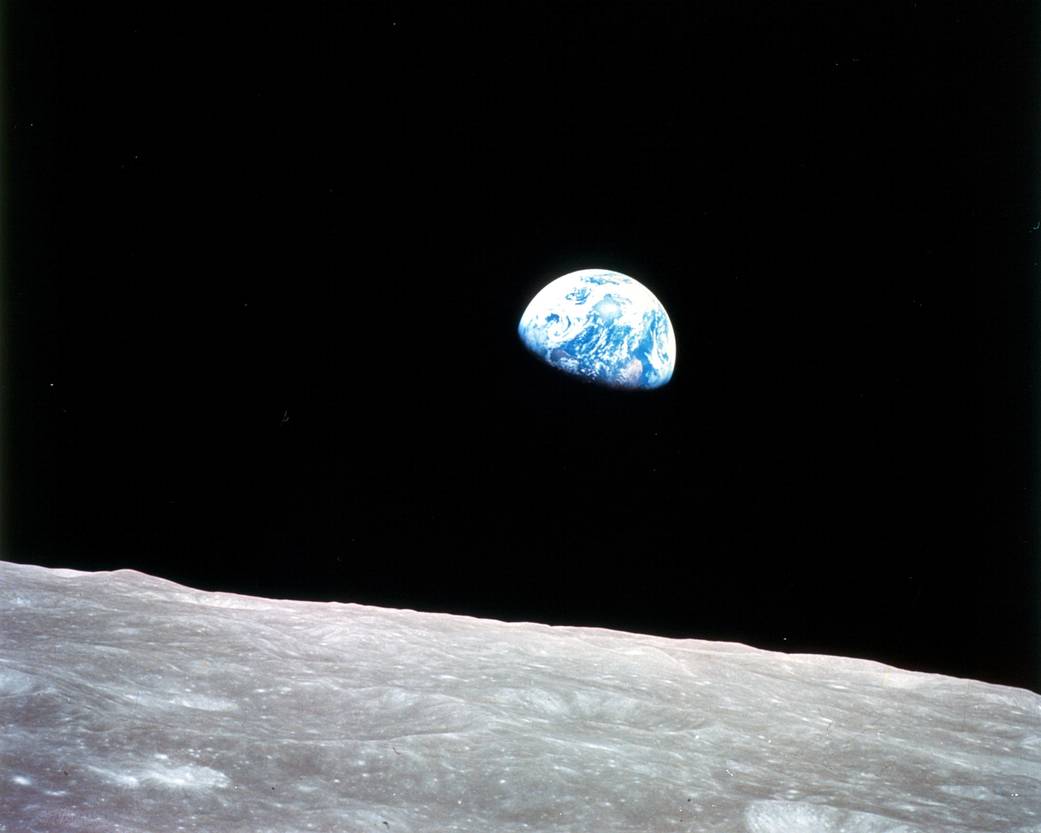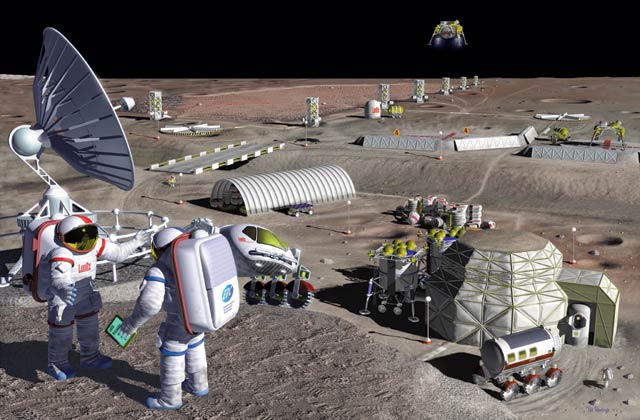
BE INSPIRED.
Soon humanity will return to the Moon in person. In orbit and on the surface, we will perform breakthrough exploration and science. We will learn much about the formation of the Moon– and the Solar system.
One thing they will investigate is how people can live and work on the Moon and use it as a base for further exploration with trips to Mars and beyond. Achieving this progress will require people from many backgrounds, organizations and nations. Not only will they solve problems in space, they will need to understand and communicate the importance and value of this work for everyone still on Earth.
What will we do on the moon?
THE NEED TO EXPLORE.
People have always looked skyward and wondered what was up there. It wasn’t until July 20,1969 that we set foot on the Moon. Since that time, the US, Russia, China and India have sent orbiters, rovers and landers to the Moon. We have brought back samples. But we have so much more to explore.
The Apollo landing sites were deliberately chosen where it is flat and safe. Now it’s time to explore more of the Moon. For example, no one has ever set foot on the dark side of the Moon and we know little about it.
What will we do on the Moon?
John Young - Apollo 16
THE POWER OF PERSPECTIVE
In 1968, the photo to the right was of everyone who ever lived (except for the 3 Astronauts who took it).
We will learn a lot of new science by going to the Moon. We will also gain a perspective of just how beautiful and precious the planet we all live on really is. It sustains life, something we haven’t found anywhere else yet.
In addition, every astronaut who has come back from space is profoundly touched by the experience. They see that we are united by a common origin and heritage. And that what divides us is much smaller than what unites us. It teaches us that we are one species, driven to explore the Universe beyond our home and our origin, together.
WHAT WILL WE DO ON THE MOON?
Earthrise Photo - William Anders, Apollo 8
THE POWER OF KNOWLEDGE
By visiting Lunar orbit and returning to the surface of the Moon, robots and astronaut explorers will discover new secrets and gain a deeper insight into the history and composition of the Moon, the formation of the Solar System, and the Universe.
Since the lunar soil is not disturbed by wind, rain, water erosion and other disruptions like glaciers and plate tectonics the way the Earth’s surface is, we will be able to study the Moon’s surface to learn about our Solar System’s history for the past 4 billion years.
We will be able to examine the billions of lunar impact craters to learn how cosmic collisions have shaped our Solar System.
On the far side of the Moon, we will be free from light and radio pollution, allowing us to look deeper into space than ever before.
We can visit Aitken Basin, a giant impact crater on the Moon’s far side, that’s so deep we can get samples from the Moon’s mantle to better understand the geology of both the Earth and the Moon.
We can compare and contrast the formation and structure of Earth, the Moon, and Mars, to get a better idea of just what makes the Earth so special.
And that’s only a start.
WHAT WILL WE DO ON THE MOON?
Aitken Basin Topography - Kaguya Orbiter
A STEPPING STONE
The Moon is an excellent place to live and work in an alien environment that’s relatively close to Earth. This will help us learn to survive and thrive even further from home.
We can learn to create life support systems to keep humans safe in environments with no atmosphere, extreme temperature fluctuations, dust and contaminants and with no source of food.
We can study the effects of reduced gravity and increased radiation on human health.
Journeys into space can teach us about the psychological effects of isolation, small group dynamics, stress and reduced communications with Earth.
This will all prepare us not only to live and work on the Moon but also to go further- to Mars and beyond.
WHAT WILL WE DO ON THE MOON?
First Light - Artist Pat Rawlings - Copyright NASA
THE SPACE ECONOMY
There are other benefits to space travel as well. We will need to develop an entire space economy to provide rocket services, landers, habitats and even tourism in space. That means new jobs, new technologies and new industries.
Additionally, the Moon has many resources to be discovered, sold to explorers, and used. These materials include iron for steel to build habitats and spacecraft. Building them in space instead of launching them from Earth’s gravity would enable us to go further, like to Mars and beyond. There is oxygen in rocks that we could use for human air since the Moon has no atmosphere. It can also help fuel rockets to allow us to go further. There is aluminum, which is light, and titanium, which is strong. These can also be used to build spacecraft. Silicon can be used to make solar cells and computer chips. We may even discover water for drinking in space.
We will learn to harvest, store and use these resources on the Moon. And by doing so, we will make it possible to leverage the reduced gravity of the Moon to travel to more distant locations.
WHAT WILL WE DO ON THE MOON?
The Deal - Artist Pat Rawlings - Copyright NASA





